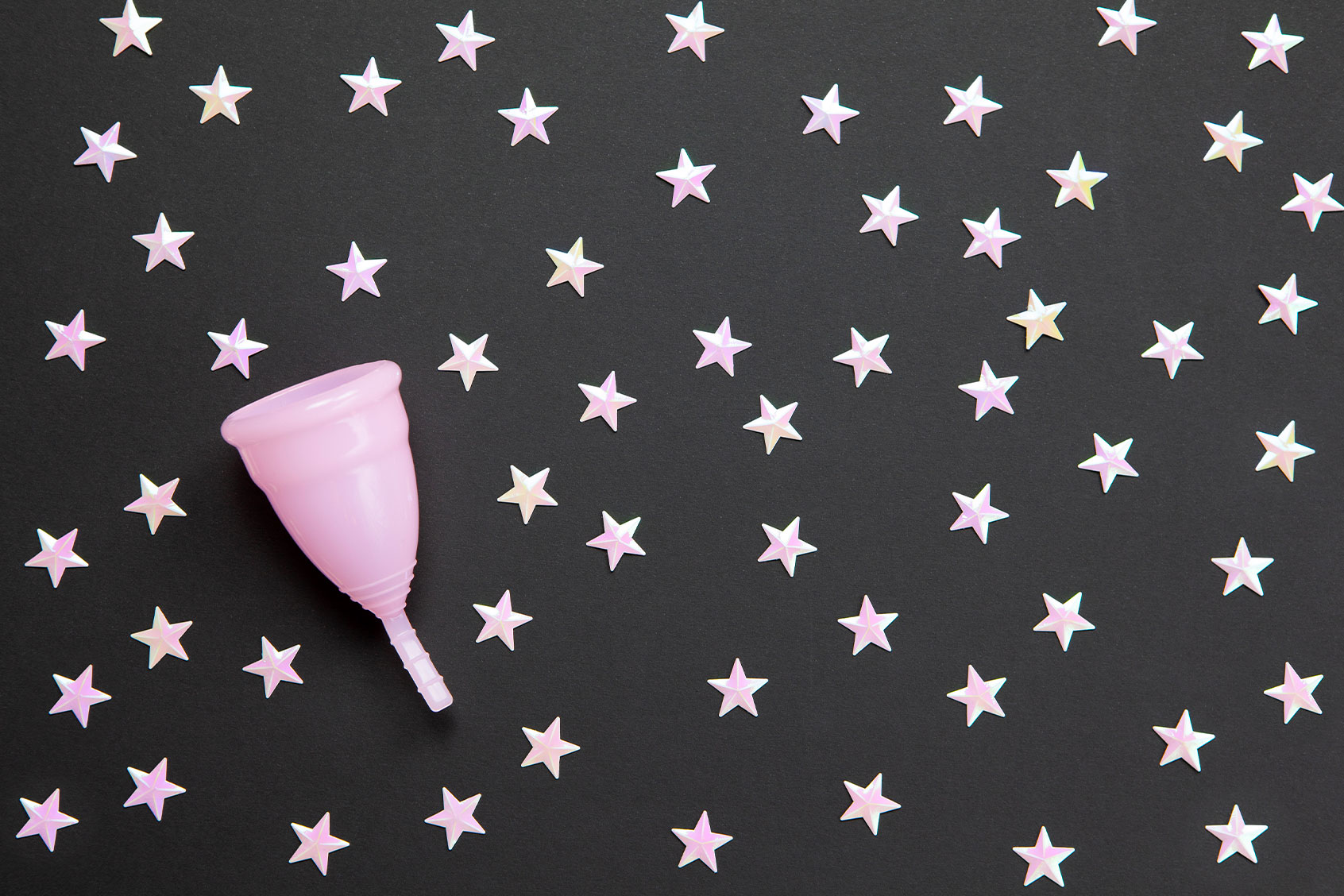When America’s first woman in space, Sally Ride, was preparing for her 1983 liftoff, NASA’s male engineers were so clueless about menstrual periods that — when trying to tally how many tampons Ride needed for her six-day flight — they asked her “Is 100 the right number?”
“No,” Ride told them. “That would not be the right number.”
Things have changed a bit for menstruating astronauts since the ’80s, though not as much as they need to. NASA still sends tampons and pads into orbit on space-bound payloads, but this can quickly get expensive. Supply runs to the International Space Station can cost around $10,000 per pound, though, so every inch of a spacecraft’s real estate — including that needed for bio-waste — is precious. Meanwhile, the agency’s goal is to get overall per-pound cost under $1,000 within 25 years.
That’s where the AstroCup payload project comes in. It’s the product of a team of researchers and program co-designer Lígia Fonseca Coelho, a Fulbright Scholar and astrobiology researcher from Técnico University, in Lisbon, Portugal.
In 2019, Coelho realized that reusable menstrual products like menstrual cups weren’t even options considered in space agency planning, despite their increasing adoption on earth through products like flexible menstrual cups. So she started working on bringing astronauts new options for period support and space agencies a new way to condense payload size.
“Women’s health in space is an understudied area of research,” said Coelho in a statement. “Certain topics, such as menstruation, are taboo, so we don’t talk about it. And if we don’t talk about it, people are not going to invest in it.”
Want more health and science stories in your inbox? Subscribe to Salon’s weekly newsletter The Vulgar Scientist.
Most astronauts choose to opt-out of menstruation altogether for the course of their space-faring, known as medically-induced amenorrhea.
By October 2022, Coelho and her colleagues had launched two menstrual cups into space on the Portuguese rocket Baltasar. After a few brief minutes in microgravity, the cups performed well, returning to earth unharmed by the hostile physics of the trip. Post-flight tests with a blood-substitute fluid showed promising results also, proving they could hold up to the intensity of a suborbital rocket launch.
“Now we know that cups made by Lunette, and probably other brands, are very resilient in the turbulence and microgravity of a rocket launch,” she said. Though several companies competed to be in the team’s tests, Lunette was selected based on its company ethos toward sustainability.
Close living quarters and hygiene-tech constraints can make periods in space less convenient for astronauts than those had on Earth. Most astronauts choose to opt-out of menstruation altogether for the course of their space-faring, known as medically-induced amenorrhea. It’s usually accomplished by hormonally suppressing periods via birth control pills, progestin shots like Depo-Provera or intrauterine devices.
But for months-long stints on the International Space Station, not to mention the rising potential for travel to Mars, long-term hormone suppression may not be every astronaut’s preference.
“If you say to a woman, ‘you have to put your reproductive system on hold for five years and this is the only way you can go to Mars,’ we are going to have problems,” Coelho said. “With AstroCup, what we really wanted was not only to launch the cup but to launch this conversation.”
Even without the bulk of tampons and pads, though, the smallest period-suppressants quickly amount to a big shipping cost when delivering long-term supplies. Researchers estimate that a three-year exploration class mission would require about 1,100 birth control pills — complete with space-proof packaging — which would add even more mass and disposal requirements for the flight.
“If we don’t talk about it, people are not going to invest in it.”
The AstroCup team, however, could cut that size-demand down significantly. Even the test run was compact. Their initial experiment needed only a 100-by-100 millimeter container, yet still included instruments to measure accelerations, pressure, temperature and humidity. Nonetheless, open questions about the viability of menstrual cups in space remains. After all, it’s a very hostile environment off-planet.
We need your help to stay independent
Space-proofing is the AstroCup team’s next task. They’re currently hunting for companies and academic researchers they can partner up with, in order to get the Lunette cups onto the ISS. Once there, the AstroCup team will be able to measure how well the cups hold up in long-term exposure to radiation. Next, the team is eyeing Mars.
“It’s already going to be uncomfortable to not have air to breathe, to not have water from a natural source to drink. They won’t have the same amount of gravity. Sleeping is going to be weird,” Coelho said. “Let’s make them as comfortable as possible so they can have their normal human processes happen in a positive way, so they can focus on finding life on Mars, on building the colony, on putting us in the next frontier.”
Read more
about this astrobiology and space travel


